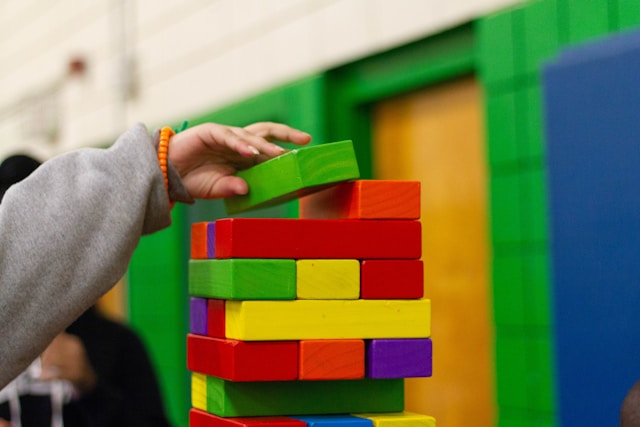One of the joys of having children is watching their imagination run wild while they play. One of the aftermaths, however, is dealing with the massive mess afterwards.
If your home has a playroom, you know the struggle of regularly keeping your children’s space neat and tidy. To help manage the madness of your child’s playroom, check out our in-depth guide on decluttering, organising, and managing their play space below.
Designate toy bins
The rule of thumb for organisation is to put everything back in its place. This can be pretty unrealistic for little ones, though, so it’s important to be flexible and not be too strict with this rule to teach children to tidy their mess effectively.
Do this by keeping designated toy bins on a shelf or against a wall in your playroom. Create clear labels at eye level with your children and separate them into categories, such as blocks, stuffed toys, toy cars, action figures, dolls, etc.
Your children can match the toy they are putting away with the respective bins, and if there’s some mixing between, it’s an easy fix later.
Include useful shelving units
We can easily get sucked into the Pinterest inspo of perfect playrooms and want to include intricate shelving for all sorts of displays and knick knacks for our kids. But truthfully, if it sits on a shelf for display, it will likely come down and only contribute to a bigger mess.
Rather than buy a bunch of low-quality shelving of varying shapes and sizes to hang or set all along the room, build useful shelves that help put away only what you need, like books, shoes, toy bins, or board games. You can use plywood as an affordable option from a quality timber merchant to build a simple unit that fits any room theme.
Create a donation schedule
Toys pile up FAST. Whether it’s that unplanned trip to Smyth’s every now and again, a birthday, Christmas, and the like, it seems children just continue to accumulate more and more toys. And the more new toys they have, the more the old ones add to the piles of unused toys that still need to be cleaned up.
A great way to both teach your children empathy and generosity and to get the mountains of playthings under control is to set up a donation schedule.
Set a schedule for when you’ll re-evaluate how much stuff they have based on your family’s needs and events. This could be every three to six months or a big donation every year.
Then involve your little one and ask which toys they like most and which they are ready to give to a new home. There are a ton of toy-donating organisations that do great work getting toys to homes in need with children who would love them just as much.
Have a designated snack time area
While some parents may not permit snacking outside of the kitchen, others may find it convenient to allow children to enjoy treats in their own comfortable space where they play. To avoid gross messes and unwanted critters crawling around your kid’s play area and keep things as neat as possible, create a designated space for snacks.
This can be a playmat in a corner that’s easily wiped up after eating, or even a small play table for children to sit down and leave their dish or cup on afterwards. Whatever the case, having a specific place for food items and crumbs to stay keeps it out of playhouses and in easy-to-clean areas for you to get to after playtime.
Leave floor space open
Open spaces in any home let in more natural light and automatically feel cleaner. This is true of playrooms as well, so keep in mind when you arrange furniture or put up play houses or structures.
Keep large setups that take up floor space to a minimum. Use the furniture you need and swap out pretend kitchens or massive doll houses from time to time to switch up the fun. Add a soft and stylish area rug in the centre to ground the entire layout and allow for plenty of space for pretend play.
Remember, your children do not need every single toy they own in their playroom at one time. Store excess toys in bins in the loft or a cupboard and change them over when it’s convenient.
Set cleanup routines
Finally, the only way the playroom will remain consistently clean is if you have a routine in place to do so. This can start with your children by having clean-up time set for the same time daily. Then you can make a schedule for deeper cleaning tasks in the room for a time that is convenient for you.
Below are some examples of cleaning tasks and frequencies you can experiment with:
- Sweeping/ mopping – Twice weekly
- Vacuum area rug – Weekly
- Wiping down tables and surfaces – Daily
- Clean baseboards/ behind furniture – Monthly
- Swap out toys – Every 3 months
- Donate unused/ unwanted toys – Every 6-12 months
Conclusion
Getting around to organising and cleaning up your child’s play space doesn’t have to be an impossible task. By using these guidelines, you’ll be able to wrangle in all of the unnecessary clutter and create a sweet and fun room both you and your children will enjoy.
For more posts on keeping a tidy home, explore our other articles here!

